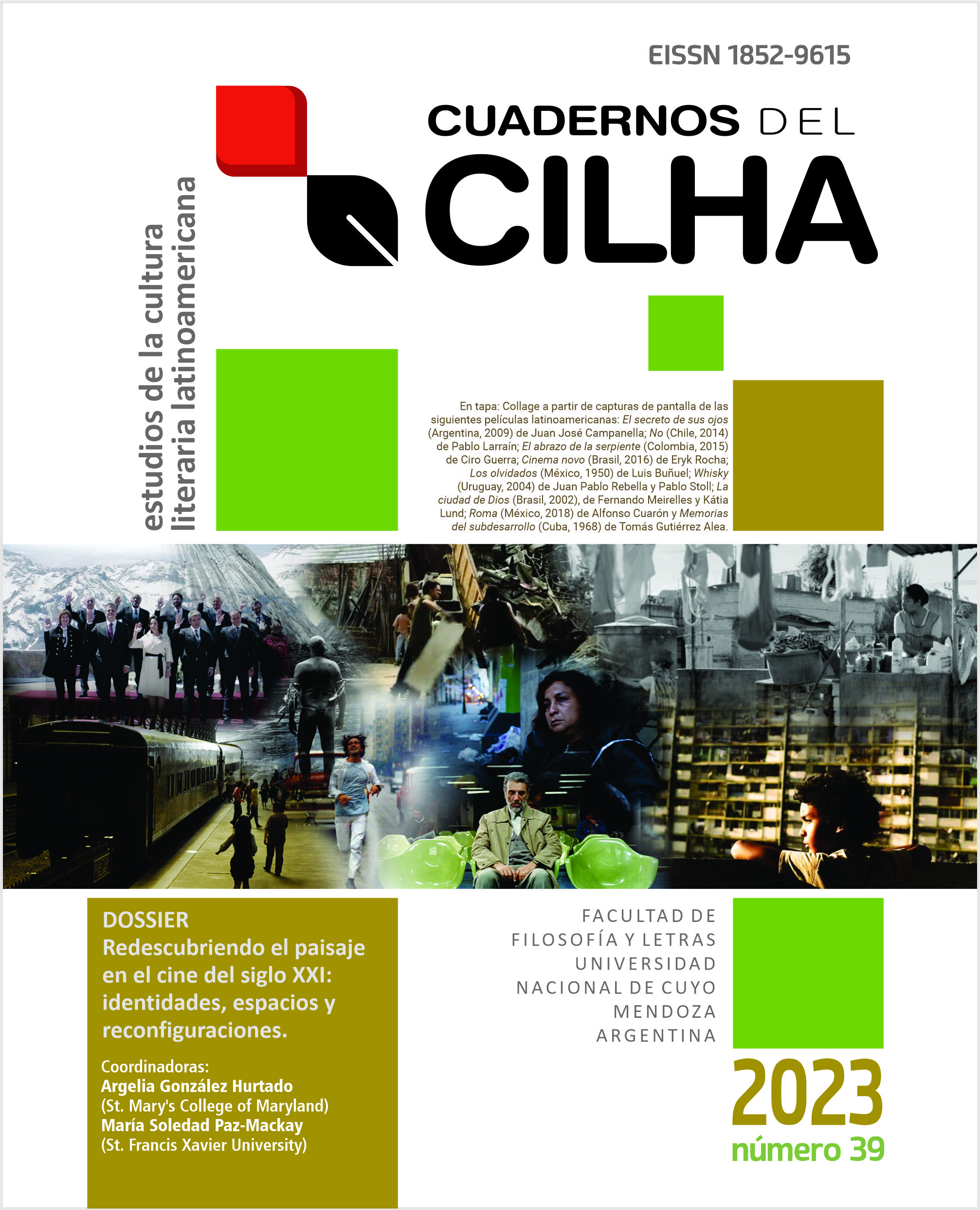Alone: a film about displacements, searches and learning
DOI:
https://doi.org/10.48162/rev.34.071Keywords:
landscape, filmic space, imaginaries, displacements, learningAbstract
After the failure of the commercial exhibition of their film in Lima –which represents the modern, urban and westernized country–, the four young authors/actors embark on a trip to the interior of the country (high jungle, the area of the city of Tingo María and its surroundings). They are looking for a new public, one 'uncontaminated' and therefore willing to value proposals outside the mainstream. However, this public does not attend the screenings either, even though admission is free. From this premise, and after showing that Solos (Lombardi, 2016) goes against the current of a good number of Peruvian films (and also novels) committed to narrating the phenomenon that marked the 20th century: the massive migration of Andean settlers to the cities of the coast, especially in Lima, I will study the protagonism of the landscape/space whose function transcends that of the mere stage, while it is reconfigured from the constant displacement through a space that I will understand with Massey as a “dimension that is always under construction”. Based on this idea, I will show that the film moves away from the stereotyped representations of the jungle as a "virgin", "exotic", and "primitive" territory that predominates in the national imagination. While it builds a changing and unstable universe that belies the initial ideals of young people, it becomes a learning film.
References
Aumont, J., Bergala, A., Marie, M. y Vernet, M. (1985). Estética del cine. Espacio fílmico, montaje, narración, lenguaje. Paidós.
Buñuel, L. (2012). Mi último suspiro. Random House Mondadori.
Colón, C. (2002). Los cuatro viajes del almirante y su testamento. Biblioteca Virtual Cervantes. https://www.cervantesvirtual.com/obra-visor/los-cuatro-viajes-del-almirante-y-su-testamento--0/html/ff83a3be-
b1-11df-acc7-002185ce6064_4.html
Elmore, P. (2015). Prólogo a esta edición. En Los muros invisibles (pp. 13-34). Fondo Editorial PUCP.
Elmore, P. (1993). Los muros invisibles. Mosca Azul.
González-Hurtado, A. y Paz-Mackay, M. S. (2021). Family Ties and Affective Landscapes in Twenty-First-Century Argentinean and Mexican Cinema: El premio (2012) and Mai morire (2013). Letras Hispanas, 17, 48-67.
Lefebvre, M. (Ed.). (2006). Introduction. Landscape and Film (pp. xi-xxxi). Routledge.
Lombardi, J. (Directora). (2016). Solos [Película]. El Árbol Azul.
Massey, D. (2005). La filosofía y la política de la espacialidad: algunas consideraciones. En L. Arfuch (coord.), Pensar este tiempo: espacios, afectos, pertenencias (pp. 101-128). Paidós.
https://periferiaactiva.files.wordpress.com/2019/03/massey.pdf
Oliver, F. (2011). De la formación del sujeto al sujeto apestado: la novela del aprendizaje en Hispanoamérica. Itinerarios: revista de estudios lingüísticos, literarios, históricos y antropológicos, 13, 177-189.
Pollarolo, G. (2021). Las representaciones de Lima en la novela y el cine peruanos. Espinela. Revista de Literatura PUCP, 9, 60-67.
Pollarolo, G. (2017). Solos y la búsqueda de un nuevo público [Ponencia]. LASA SUR, Montevideo, Uruguay.
Rueda, M. E. (2003). La selva en las novelas de la selva. Revista de Crítica Literaria Latinoamericana, 29(57), 31-43.
Rivera Salmerón, E. (2019). Vaivenes de un tópico: la contraposición corte y aldea en el último Lope de Vega. Revista de Literatura, LXXXI(162), 423-449.
Urzúa Opazo, M. y Depetris Chauvin, I. (Eds.). (2019). Introducción. En Más allá de la naturaleza. Prácticas y configuraciones espaciales en la cultura latinoamericana contemporánea (11-52). Universidad Alberto Hurtado.
Vich, V. (2010). El discurso sobre la sierra del Perú: la fantasía del atraso. En J. Ortega (Ed.), Nuevos hispanismos interdisciplinarios y trasatlánticos (pp. 253-265). Iberoamericana y Verveut.












































